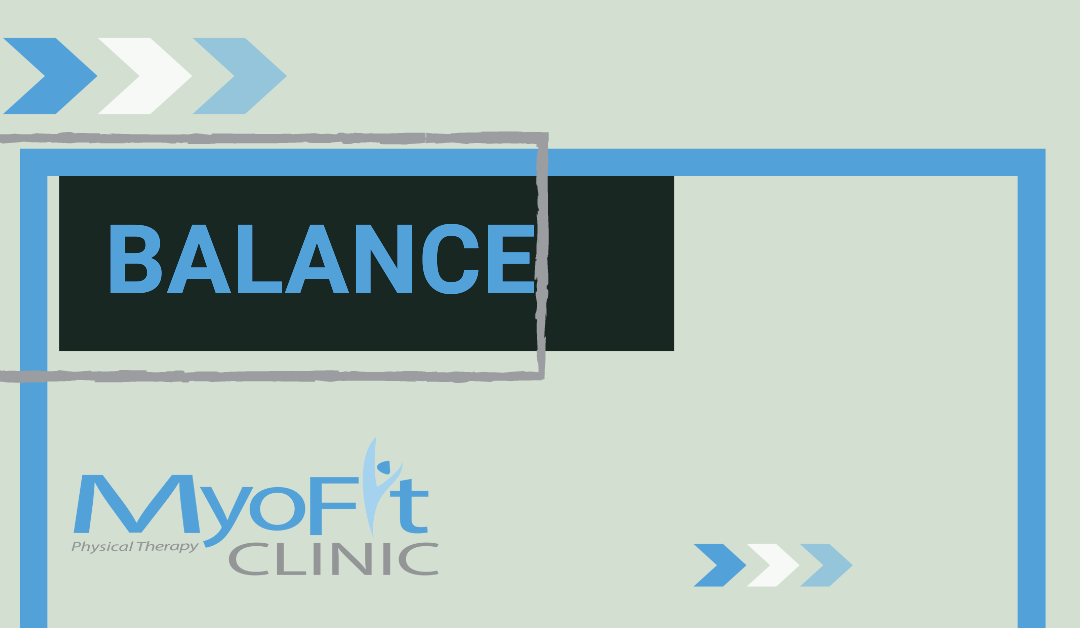Why Balance is Important to your Health
Dr. Adam M Cramer, PT, DPT
As the weather around our community starts to change the surfaces that we walk on can become more slippery. Falls are much more common which can result in a variety of injuries and disabilities. Falls cost our healthcare system and taxpayers an estimated $500 million a year(1). This does not include other costs associated with the individual which include disability, dependence, unemployment, and side effects of inactivity. Falls and loss of balance can occur with anyone at any age but are most common with individuals 65 years and older(2). There is a multitude of reasons why we fall and this can include decreases in strength and coordination, neuropathy of the feet, vision changes, low light environments, and lack of general physical conditioning.
Balance is the ability to maintain control of a particular body position while performing a given task with minimal postural sway(2). This could be achieved simply by sitting at a table upright with your back off of the chair, standing on one leg, performing a squat/lunge or riding a bike. Good muscle control reduces energy demands minimizes fatigue and therefore reduces injury risk. To perform efficient movements across a variety of activities and tasks, we need to be able to maintain control of our body positioning during static and dynamic activities by implementing visual feedback strategies(3). Static balance is maintaining balance while standing still and dynamic balance is maintaining balance while moving. An example of using dynamic-visual feedback strategies includes using the Nintendo Wii balance board and gaming system with direct supervision and training from a licensed physical therapist. By improving your static and dynamic balance you will be able to perform any activity longer, reduce your risk for falls and enjoy a higher quality of life.
Everything we do relies heavily on our ability to balance, yet maintaining physical balance skills is one of the most underrated aspects of well-being and one of the easiest to improve upon. As we age, we gradually start to lose our muscle strength, vision, and sensory perception. All of these things contribute to our ability to balance effectively and safely. As a result of the general aging process, our mobility can be compromised and lack of mobility can lead to falling which most likely could result in injury and hospitalization.
The good news is that your physical balance can improve fast! Balance is a learned skill that can be maintained and improved by participating in a physical therapy balance program. Balance exercises can strengthen your proprioception. This basically means by performing exercises tailored to our own physical needs it can help the body to better position your muscles and allow you to sense where your body needs to be without looking. In addition, practicing balance builds muscle and increases the range of motion in the joints, which helps in distributing weight evenly, creating overall stability, and reducing the risk for falls(4). Not only will your balance improve by performing balance exercises but it will also increase your bone density, improve circulation, improve your ability to walk without a cane or walker, and improve brain functioning(5).
If you want to continue to do the things that you love in life from fishing and golfing, to just walking and enjoying nature then you have to work at improving your balance and strength because it only takes one misstep to keep you from doing what you love.
Dr. Adam M Cramer, PT, DPT is a licensed physical therapist, balance specialist, and owner of MyoFit Clinic in Middlefield, Ohio.
Sources
1. Vaught SL. Gait, Balance, and Fall Prevention. The Ochsner Journal. 2001;3(2):94-97.
2.Howe TE, Rochester L, Jackson A, Banks PMH, Blair VA. Exercise for improving balance in older people. Cochrane Database of Systematic Reviews 2007, Issue 4. Art. No.: CD004963. DOI: 10.1002/14651858.CD004963.pub2.
3. Hoda Salsabili et al. Dynamic stability training improves standing balance control in neuropathic patients with type 2 diabetes. Journal of Rehabilitation Research and Development. 2011;48(7):775-786.
4. Leah G. Concannon, Matthew J. Grierson, and Mark A. Harrast, “Exercise in the Older Adult: From the Sedentary Elderly to the Master’s Athlete,” Pm&R, vol. 4, no. 11, pp. 833–839, 2012.
5. Yves J. Gschwind, Reto W. Kressig, Andre Lacroix, Thomas Muehlbauer, Barbara Pfenninger, and Urs Granacher, “A best practice fall prevention exercise program to improve balance, strength/power, and psychosocial health in older adults: study protocol for a randomized controlled trial,” Bmc Geriatrics, vol. 13, 2013.

